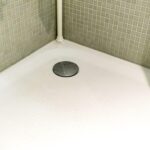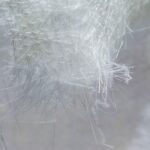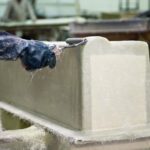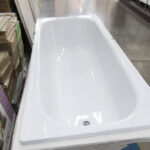RV fiberglass can be a beautiful addition to any recreational vehicle, but over time, it can become dull and discolored due to oxidation. This can be unsightly and decrease the overall value of the RV.
Fortunately, there are several methods that can be used to remove oxidation from RV fiberglass and restore it to its original shine.
One of the most effective ways of How to Remove Oxidation from RV Fiberglass is through the use of specialized cleaners. These cleaners are designed to break down the oxidation and remove it from the surface of the fiberglass.
It is important to choose a cleaner that is specifically formulated for use on fiberglass and to follow the manufacturer’s instructions carefully.
Another method for removing oxidation from RV fiberglass is through the use of a rubbing compound. Rubbing compounds are abrasive and can be used to buff away the oxidation and restore the shine to the fiberglass.
It is important to choose a rubbing compound that is appropriate for use on fiberglass and to use it carefully to avoid damaging the surface of the RV.

Understanding Oxidation on RV Fiberglass
RV fiberglass is a popular choice for many RV owners due to its durability, lightweight, and low maintenance. However, over time, RV fiberglass can become dull and chalky due to oxidation. Oxidation occurs when the fiberglass is exposed to UV rays, air pollution, and other environmental factors.
Oxidation can be identified by a chalky appearance on the surface of the fiberglass, which can be easily removed by rubbing your finger on the surface. If left untreated, oxidation can cause the fiberglass to become brittle and prone to cracking.
To remove oxidation from RV fiberglass, it is important to understand the extent of the damage. For light oxidation, a mild abrasive cleaner and a soft-bristled brush can be used to remove the oxidation. For heavy oxidation, a more aggressive cleaner and a power buffer may be required.
It is essential to use the right products and techniques when removing oxidation from RV fiberglass. Using the wrong products or techniques can cause damage to the fiberglass, leading to costly repairs.
It is recommended to test any new product on a small, inconspicuous area before applying it to the entire surface.
Regular maintenance can prevent oxidation from occurring on RV fiberglass. Applying a protective wax or sealant can help to protect the fiberglass from UV rays and other environmental factors. It is also important to keep the RV covered when not in use to prevent prolonged exposure to the elements.
By understanding oxidation on RV fiberglass and taking the necessary steps to prevent and remove it, RV owners can keep their RV looking new and extend its lifespan.

Identifying Oxidation on Your RV
When it comes to removing oxidation from RV fiberglass, the first step is to identify the areas where oxidation has occurred. Oxidation is a natural process that occurs when the fiberglass is exposed to the sun, wind, and rain. Over time, the fiberglass becomes dull and discolored, making it look old and worn out.
To identify oxidation on your RV, look for the following signs:
- Faded or discolored areas: Oxidation causes the fiberglass to lose its color and become faded or discolored. Look for areas that are lighter or darker than the rest of the RV.
- Chalky residue: When oxidation occurs, a chalky residue may appear on the surface of the fiberglass. This residue is caused by the breakdown of the fiberglass and can be easily wiped away with a cloth.
- Rough texture: If you run your hand over the surface of the fiberglass and it feels rough or bumpy, it may be a sign of oxidation. The rough texture is caused by the breakdown of the fiberglass and can be smoothed out with the right tools.
It is important to identify these signs of oxidation early on so that you can take action before the damage becomes too severe. By removing oxidation from your RV, you can restore its original shine and protect it from further damage.
Tools and Materials Needed
Cleaning Supplies
To remove oxidation from RV fiberglass, you will need some cleaning supplies. A soft-bristled brush, microfiber towels, and a bucket of warm water with soap are essential. A mild soap like dish soap or car wash soap is recommended. Avoid using abrasive cleaners or scrubbers that can damage the fiberglass surface.
Oxidation Remover
An oxidation remover is a critical component in the oxidation removal process. There are several types of oxidation removers available in the market, such as rubbing compounds, polishing compounds, and dedicated oxidation removers.
Choose an oxidation remover that is specifically designed for fiberglass surfaces and is safe for use on RVs.
Wax and Polish
After removing the oxidation, it is essential to protect the fiberglass surface from further damage. Applying a coat of wax or polish will help protect the surface from UV rays, dirt, and grime. There are several types of waxes and polishes available in the market, such as paste wax, liquid wax, and spray wax.
Choose a wax or polish that is compatible with your RV’s fiberglass surface and is designed to provide long-lasting protection.
In summary, to remove oxidation from RV fiberglass, you will need cleaning supplies such as a soft-bristled brush, microfiber towels, and soap. An oxidation remover specifically designed for fiberglass surfaces and a wax or polish to protect the surface are also necessary.
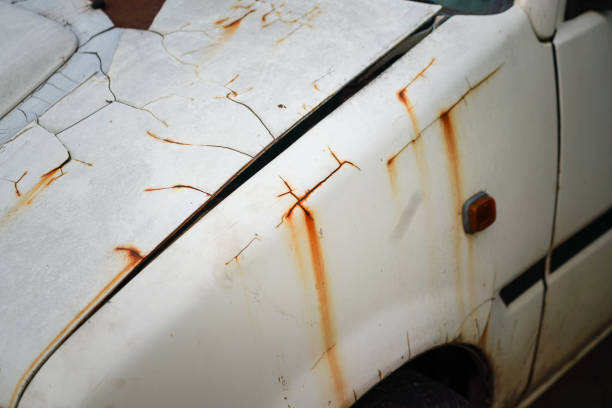
Step-By-Step Oxidation Removal
Removing oxidation from RV fiberglass is a process that requires patience and attention to detail. Here are the steps to follow to get the job done right.
Cleaning the Surface
The first step in removing oxidation from RV fiberglass is to clean the surface thoroughly. This can be done using a mild detergent and warm water. It is important to remove any dirt and debris from the surface before applying an oxidation remover.
Applying Oxidation Remover
Once the surface is clean and dry, an oxidation remover can be applied. There are many different types of oxidation removers available on the market. It is important to choose one that is specifically designed for use on fiberglass. Follow the manufacturer’s instructions for application.
It is important to note that oxidation removers can be harsh chemicals, so it is recommended to wear gloves and eye protection during application.
Polishing the Surface
After the oxidation remover has been applied and allowed to sit for the recommended amount of time, it is time to polish the surface. A polisher can be used to buff the surface to a shine.
It is important to use a polishing compound that is specifically designed for use on fiberglass. Follow the manufacturer’s instructions for application.
In conclusion, removing oxidation from RV fiberglass is a process that requires attention to detail and patience. By following these steps, the surface can be restored to its original shine.
Maintaining Your RV’s Fiberglass
Regular Cleaning
Regular cleaning of your RV fiberglass is essential to keep it looking new and prevent oxidation. It’s recommended to wash your RV at least once a month with a mild detergent and water.
Avoid using harsh chemicals or abrasive scrubbers that can damage the fiberglass. Instead, use a soft-bristled brush or sponge to gently scrub the surface.
To make the cleaning process easier, consider using a specialized RV wash and wax product that can remove dirt and grime while also adding a protective layer of wax to the fiberglass. This will help prevent oxidation and keep your RV looking shiny.
Periodic Waxing
In addition to regular cleaning, periodic waxing is also important to maintain your RV’s fiberglass. Waxing helps protect the fiberglass from UV rays and other environmental factors that can cause oxidation. It also helps repel water and prevent dirt and grime from sticking to the surface.
When waxing your RV, use a high-quality fiberglass wax that is specifically designed for RVs. Apply the wax in a thin, even layer using a soft cloth or applicator pad. Let it dry completely, then buff it off with a clean, dry cloth. Repeat this process at least once a year or as needed to keep your RV’s fiberglass in top condition.
Proper Storage
Proper storage of your RV can also help prevent oxidation and keep the fiberglass looking new. When not in use, store your RV in a covered area such as a garage or carport. If this is not possible, consider using a specialized RV cover that is designed to protect the fiberglass from UV rays and other environmental factors.
In addition to proper storage, it’s also important to maintain proper ventilation inside your RV. This will help prevent moisture buildup that can lead to mold and mildew growth, which can damage the fiberglass over time.
By following these tips for maintaining your RV’s fiberglass, you can keep it looking new and prevent oxidation for years to come 14.
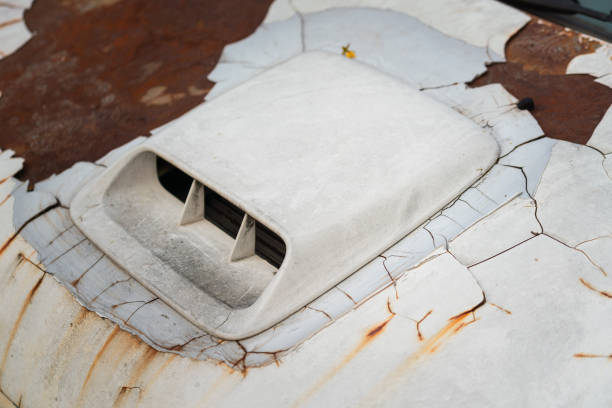
Common Mistakes to Avoid
When it comes to removing oxidation from RV fiberglass, there are several common mistakes that people make that can actually make the problem worse. Here are a few things to avoid:
- Using abrasive cleaners: While it may be tempting to use a harsh cleaner to get rid of the oxidation quickly, this can actually cause more damage to the fiberglass. Abrasive cleaners can scratch the surface of the fiberglass, making it more susceptible to future damage.
- Using the wrong tools: It’s important to use the right tools when removing oxidation from RV fiberglass. Avoid using anything that could scratch or damage the surface, such as steel wool or a wire brush. Instead, use a soft sponge or cloth to gently clean the surface.
- Not rinsing the surface properly: After cleaning the fiberglass, it’s important to rinse it thoroughly with clean water. Any leftover cleaning solution or debris can cause further damage to the fiberglass.
- Not protecting the fiberglass: Once the oxidation has been removed, it’s important to protect the fiberglass to prevent future damage. Applying a wax or sealant can help to protect the surface from UV rays and other environmental factors that can cause oxidation.
By avoiding these common mistakes, you can effectively remove oxidation from your RV fiberglass without causing further damage.
Conclusion
Removing oxidation from RV fiberglass can be a challenging task, but it is essential to maintain the appearance and longevity of your RV. By following the steps outlined in this article, you can effectively remove oxidation from your RV fiberglass and restore its shine.
Remember to always start with a thorough cleaning of the RV, removing any dirt, grime, and debris before attempting to remove oxidation. It is also important to choose the right products and tools for the job, such as a quality oxidation remover and a soft cloth or buffer.
Regular maintenance is key to preventing oxidation from forming in the first place. By keeping your RV clean and protected from the elements, you can extend its lifespan and maintain its value.
Overall, removing oxidation from RV fiberglass requires patience, attention to detail, and the right tools and products. With the proper care and maintenance, your RV can look its best for years to come.




